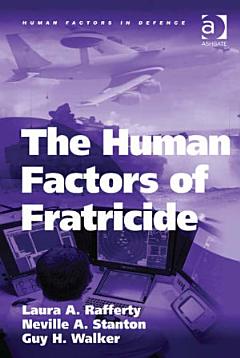Fratricide has been defined as firing on your own forces, when mistaking them for enemy forces, which results in injury or death. Rates of fratricide incidence have been steadily increasing and the complexity of the contemporary operating environment may lead to a continuation of this trend. Although the majority of research into fratricide has focused on the development of technological decision aids, recent explorations highlight the need to emphasise the social aspects within a socio-technical framework.
This book presents and validates, via the use of case studies, a model of teamwork and decision-making factors that are associated with incidents of fratricide. In summary, it offers a review and evaluation of contemporary theoretical perspectives on teamwork and fratricide, as well as a range of accident analysis approaches. A novel theory of fratricide is then presented followed by a new methodology for assessing fratricide. Naturalistic case studies of teams are undertaken in the military domain. These studies illustrate the approach and offer early validation evidence. In closing, the book presents a series of principles designed to reduce the likelihood of fratricide in the future.

